Nioh follows the fictionalized adventures of
William Adams through the end of the Sengoku period. It's about as historically accurate as
Abraham Lincoln: Vampire Hunter, and far from the only dramatically reimagined game based on the time period (
Senguku Basara possibly skewing closest). Still, it's got a lot of actual names, places, and events incorporated into the plot.
In this version, William Adams, or Anjin ("pilot") as he comes to be called, was saved as a young man by a selkie-ish spirit named Saoirse, who bound his life to hers. This serves to both make him immortal in a kind of
Dragonheart way, and means he can see spirits unaided - something most people in the game can't do. Within the world of
Nioh, the substance known as amrita grants power, thus making it desirable for those in the know...and as it happens, Saoirse is really good at finding it.
The prologue sees William escaping the Tower of London, only to get Saoirse captured by
Edward Kelley and whisked away to Japan, which is host to a veritable crap-ton of amrita, and a lot more spirits than other places (apparently).
William follows, and thus we have a game. One of the highly anticipated aspects of
Nioh is that it adapts a fair number of elements from the
Souls games. However, it does quite a lot different from them as well.
The basic game loop is very similar - work your way through an interconnected environment, opening up routes to checkpoints (shrines here, rather than bonfires or lamps), to eventually reach a boss. Resting at a checkpoint replenishes supplies but resets enemies, and if you die, you have one shot to make it back to your grave to reclaim your amrita/souls or they're lost.
A different element for
Nioh is that you've got a Guardian Spirit (technically, what Saoirse is, but she's kidnaped and all). It provides you with bonuses, and charges up as you gain amrita or stagger enemies to be unleashed as a Living Weapon, during which time it replaces your HP, and can do some special attacks. Often useful for, say, going into beast mode to zerg down the last chunk of a boss. Die once, and it can be reclaimed with your amrita, at whatever "charge" it was at. Die a second time (or elect to recall it to the shrine) and it gets reset.
Most characters of importance have their own Guardian Spirit, which you'll often get a copy of after a mission. You'll wind up with a nice list of ones to pick from (freely swappable at shrines), like so many glowing Pokemon.
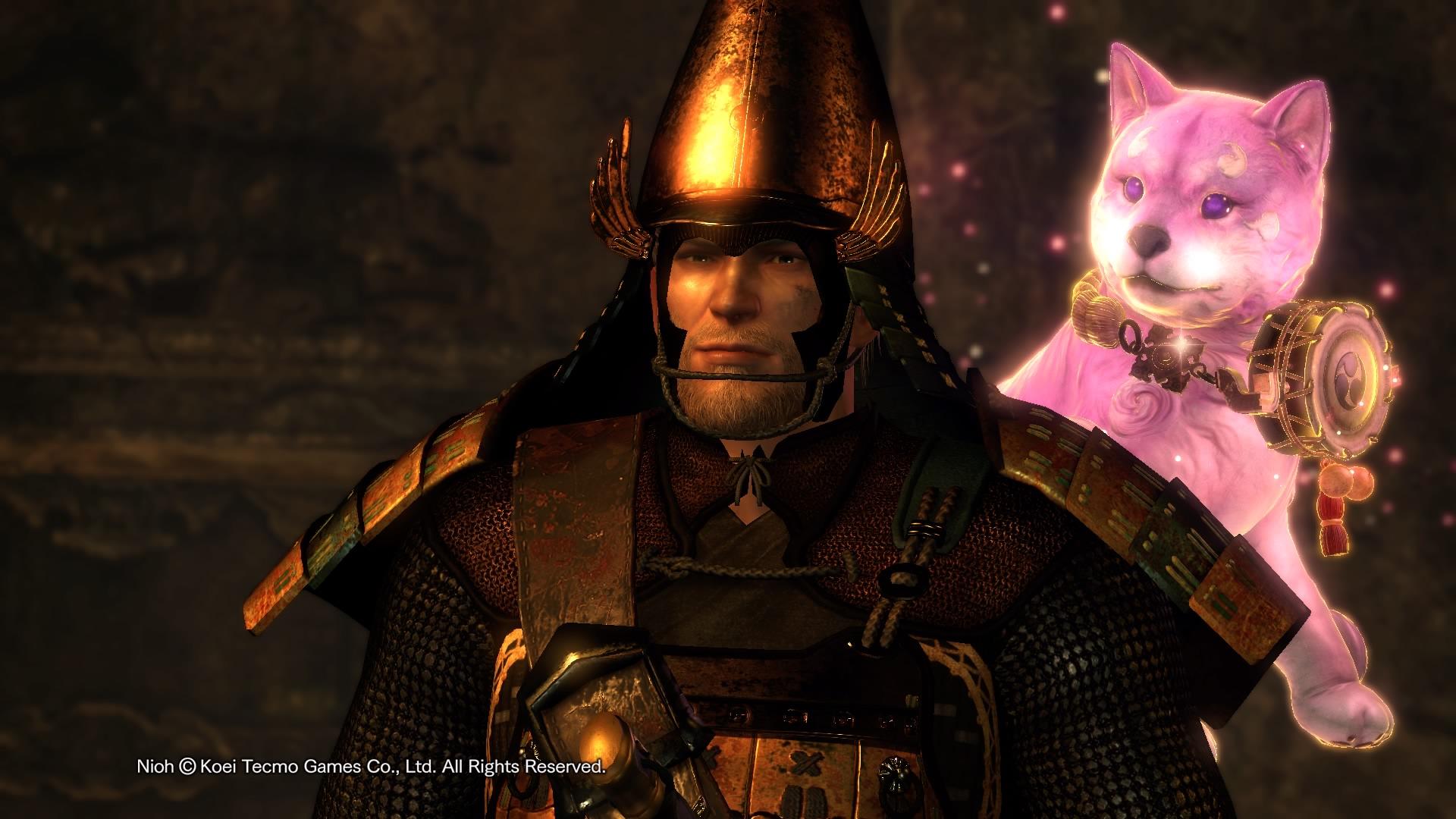 What, you didn't think this was a serious game, did you?
What, you didn't think this was a serious game, did you?A sort-of downside is that most of them past the initial three you're given require raising up your Spirit stat to fully take advantage of. They'll have base stats, but then a couple tiers of additional benefits.
Nioh has a similar system for armor, where getting more than the basic defenses from it requires having a certain amount of stats leveled.
Loot is actually very comparable to
Diablo or similar - you get a lot of it, just like, so, so much...most of which is garbage. The up side is that you can very easily end up having very decent examples of every weapon type, encouraging you to try them, which was cool. The downside is that inventory space is not unlimited, though at least you can trade things in at shrines. 500 spaces seems like a lot, but it gets filled up fairly fast.
Still, equipment was something that started to illustrate a trend in
Nioh that I wasn't particularly fond of. It's almost like Team Ninja looked at the
Souls games, narrowed in on an element, and tried to figure out how to make it more convoluted. It's a more complicated game at nearly every turn, which some folks may dig, but I didn't.
Stamina (or Ki here) is also more complicated. Fully exhausting it leaves you winded and completely defenseless...the upside being, the same goes for enemies, and you can see their ki meters as well. You can also do a Ki burst to increase the regeneration rate, though that's kind of like hitting dash and not going anywhere - in the heat of combat, there's a good chance you'll get smacked, unless you're using it to extend a combo chain.
More sadistically, non-human enemies tend to create areas where Ki regeneration is slowed.
Then there are skill points to put into each weapon type to expand your move sets, quests to unlock more tiers of them or extra-special moves, and on, and on...
Again, it takes a basic concept that works fine, and builds more on top of it. In and of itself it's fine, but coupled with basically doing that for everything, and I found it to be a bit excessive.
The structure of the game is mission-based instead of free roaming. It takes away the feeling of exploration or discovery, and limits your options with regard to buying supplies or whatnot. For example, ranged weapons are actually very effective here, but ammo is very limited. So, if you're attempting a boss or part of a level repeatedly (which, to be fair, most people probably will), it's hard to keep using a strategy that relies on having ammo, or some other consumable.
Actual level design is generally quite solid, at least in terms of working in shortcuts and all that. Most runs back to a boss are short. The downside is that it ends up feeling very same-y, usually dark and/or foggy, often a bit cramped (as it presents a tactical challenge) and so on. Levels are also reused a fair bit - side missions all seem to use the same few levels, with different parts blocked off. They also reuse enemies quite a lot.
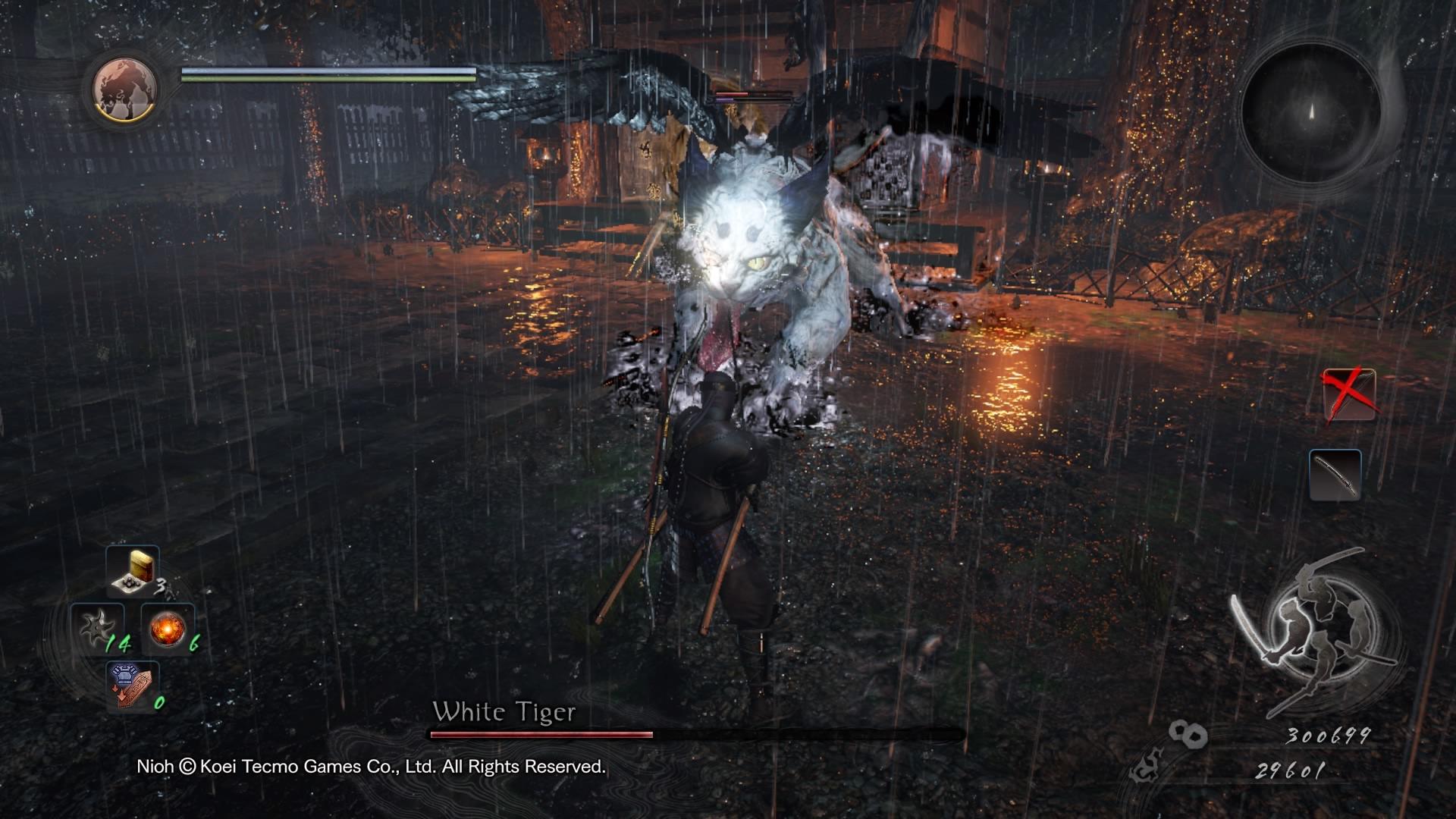 Dimly lit temple? Weird boss thing? Yep, that's Nioh.
Dimly lit temple? Weird boss thing? Yep, that's Nioh.Really, the game often looks almost 7th gen, though this is kind of a good thing. Reason being that you actually get a toggle for graphics, the default (and only real option) being to prioritize 60fps. On a regular PS4, this means the game is usually running
closer to 720p. So while it might look kinda poopy for a PS4 game, if you stop and look...it always plays very well.
Though they are dark, most levels do have a lot of bright colors in the lighting, which can lend them a dream-like quality that suits a lot of the enemy design (repetitive as it gets to be).
Nioh, as expected, draws heavily on Japanese folklore, with its own takes on a variety of different spirits and creatures. In-game notes explain the legends behind them, and some are pretty creative inclusions. I liked how it handled mimics and fake walls, for example, which have non-violent ways to get past them - mimics are Mujina, and presented more playfully. Find one, and it'll mimic you, and do an emote. If you respond with the same one, it'll leave the treasure for you.
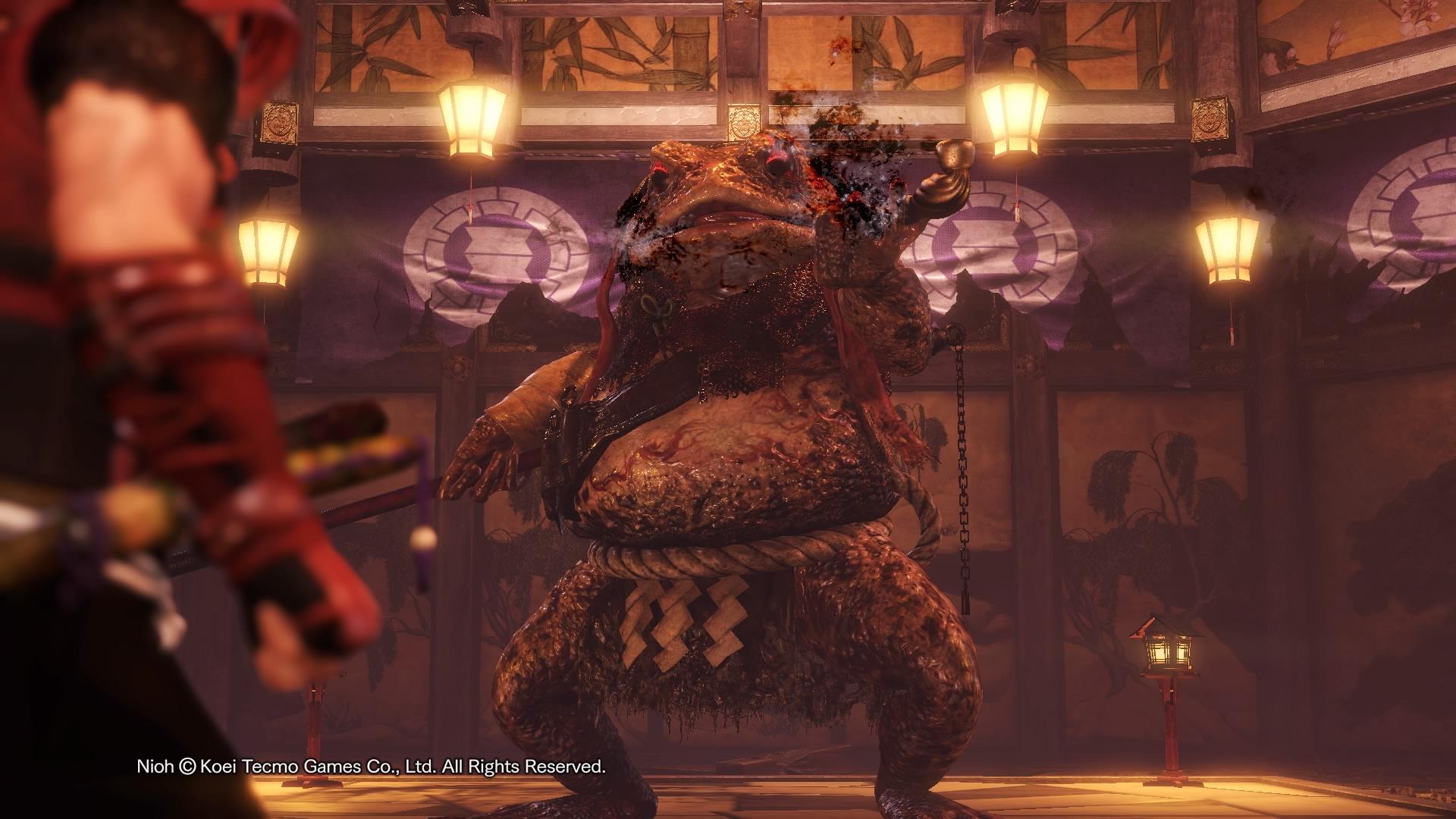
At their best, bosses are a fun challenge. Many, however, are really pretty cheap. Very fast and/or long reach, and often liable to one-shot. Maybe not initially, but so much in this game will effectively leave you open for follow-up attacks. Plenty of bosses will give Capra Demon a run for his money with regard to ruining your day literally as soon as you set foot in the arena as well.
The minor upside here is that you do get some pretty cheap tools to (potentially) use as well. I abused the Sloth talisman a
lot for example (makes the enemies move in slow motion), human enemies can often be kited and subjected to pokes from a spear, etc. I've seen some lament how effective enfeebles and stuff can be here, but to me, it's a tool, that's the point

Plus, I suck, and needed all the advantages I could find.
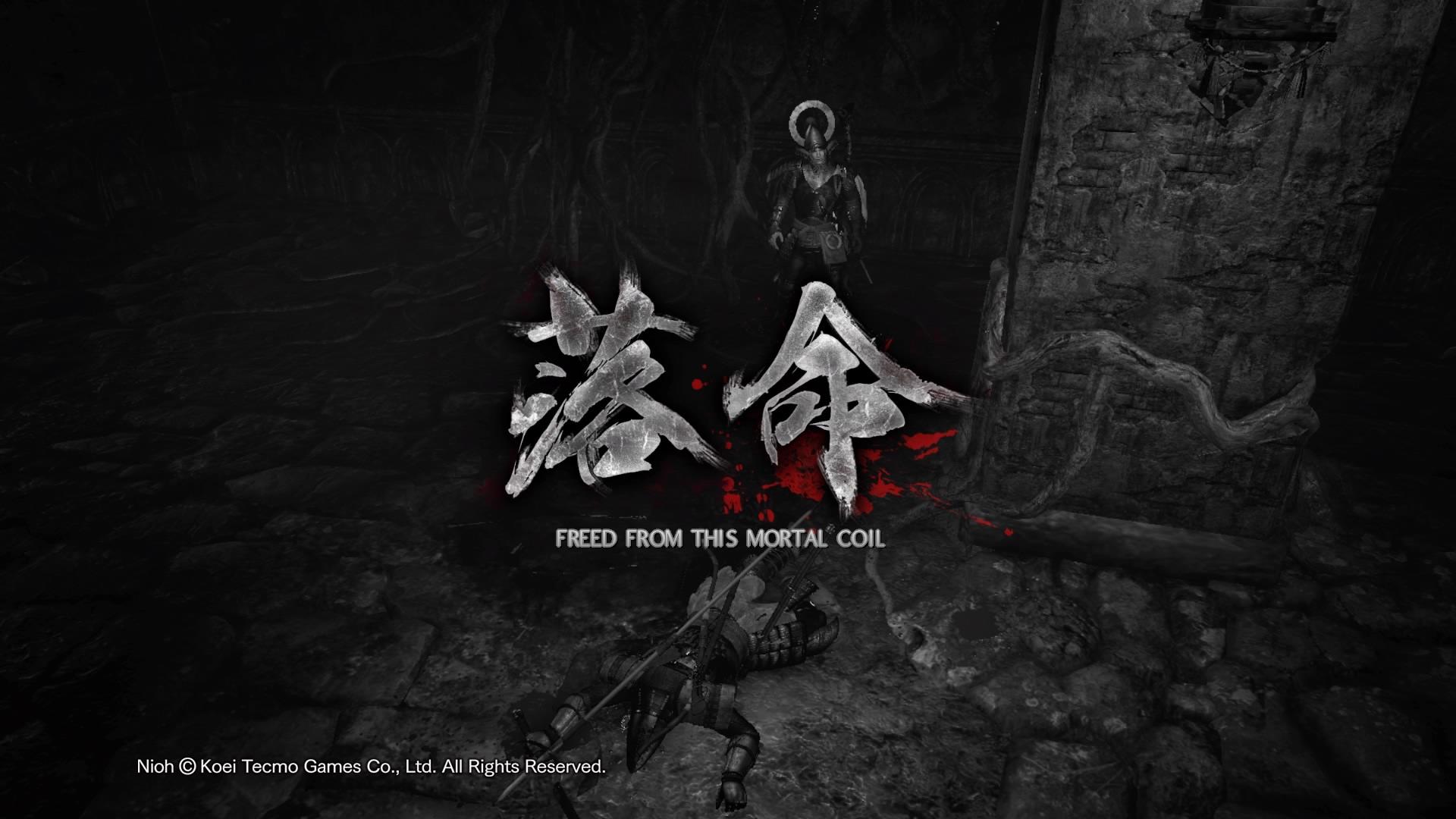 I only saw this screen about 630 times...
I only saw this screen about 630 times...Overall, I think
Nioh is a quality offering from Team Ninja...but ultimately not one I really loved. It's well made for what it is, but it's missing the kind of nebulous exploration of the
Souls games that made chipping my way through them feel worth it. Once you get past the basic combat gameplay loop,
Nioh really seems more like
Diablo III's Adventure Mode. For me, fun enough for a bit, but I tend to get motivated more by story and lore, so I was more than happy to see the end (like, the real end, I did do the epilogue mission).
Definitely one to try if you like more hardcore games though. It's certainly got a -lot- of potential content to play through and a fairly unique vibe.
Also, since it came up earlier in the thread...
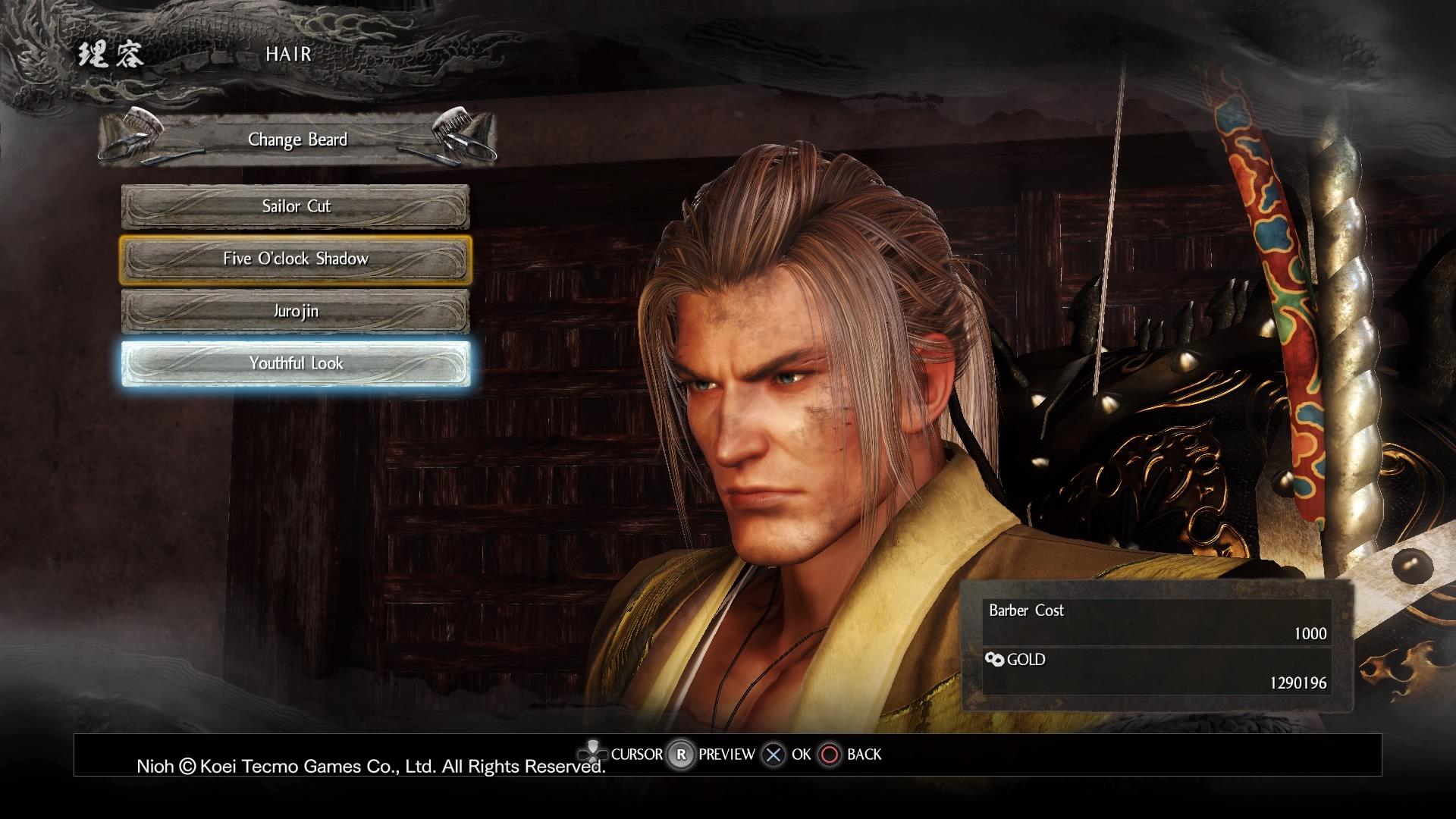 Noooo stubble, dee doo.
Noooo stubble, dee doo.








